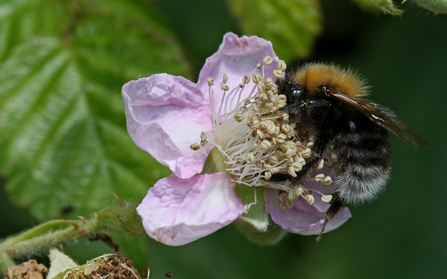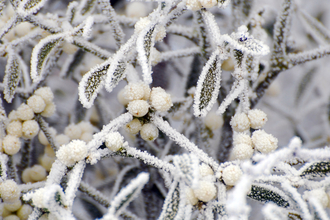Fuzzy, furry bumblebees are familiar to most of us but if you've never taken a moment to look at them more closely, you might be forgiven for thinking that they're all the same. Not so - there are 24 species of bumblebee in the UK and one of the most common is a relative newcomer.
If you think that all bumblebees are black and yellow, meet the tree bumblebee Bombus hypnorum. Unique amongst British bumbles for their colour combination, these buzzing bees are easy to identify - look for a bright ginger thorax (the area behind the head) followed by a mainly black abdomen with white 'tail'. They arrived in the UK in 2001 and here in Worcestershire a few years later. Unlike buff-tailed bumblebees that make a nest in an old mouse hole or carder bees that nest at the base of tussocky grass, tree bumblebees do what their name says - they nest in hollows of trees or even roof cavities or bird boxes.





